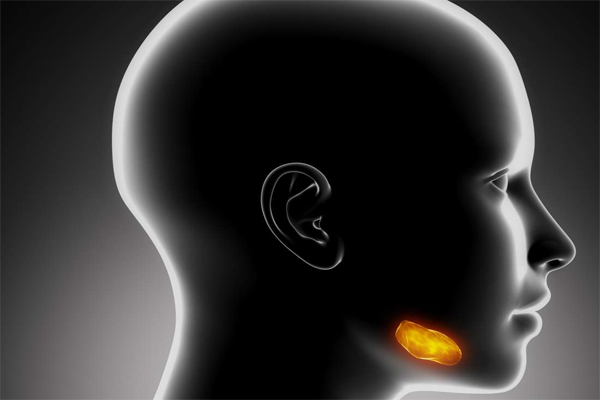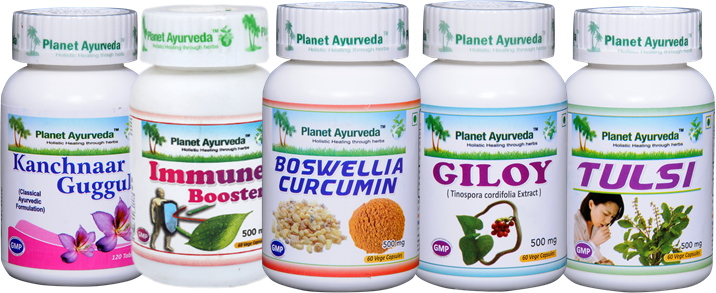Management of Angiofollicular Ganglionic Hyperplasia in Ayurveda
Abstract
Angiofolicular ganglionic hyperplasia is a rare disease that affects the lymph nodes. It can be life-threatening depending on what type of condition. Therefore, it becomes important to manage it with proper treatment, which erases it from the root. Ayurveda also believes in the management of the disease knowing its root cause and provides natural remedies for the management of Angiofolicular ganglionic hyperplasia.
Introduction
Angiofollicular ganglionic hyperplasia is also known as Castleman disease, is a rare disease that involves the enlargement of lymph nodes, thus also considered as the group of rare lymphoproliferative disorders.
As per Ayurveda, Mandagni leads to vitiation of Rasa Dhatu which affects Laseeka Granthi (Lymph nodes).

Main Forms of Castleman’s Disease
Unicentric and Multicentric Types of Castleman Disease.
- Unicentric Castleman Disease: It includes only a single lymph node usually in the abdomen or chest.
- Multicentric Castleman Disease: It involves multiple lymph nodes all over the body and is associated with human herpesvirus type 8 (HHV-8) and human immunodeficiency virus (HIV).
Causes of Angiofollicular Ganglionic Hyperplasia
- The cause of Angiofollicular ganglionic hyperplasia is not clear. However, some studies stated that increased IL-6 i.e. interleukin-6 production may take part in the progression of this condition. IL-6 is usually generated within lymph nodes and helps regulate the immune reaction to infection. The increase in IL-6 production can lead to the overgrowth of lymph cells.
- Infection with a virus i.e. HHV-8 (human herpesvirus 8) is associated with the multicentric Castleman disease. HHV-8 presence almost seen in all HIV-positive people and develops a multicentric CD.
- It can affect people of any age, but the average age of people with a unicentric type diagnosis is 35 years and with a multicentric type in their 50s and 60s.
Signs and Symptoms of Angiofollicular Ganglionic Hyperplasia
Signs and symptoms depend on the subtype such as people having unicentric Castleman disease do not always experience symptoms. When symptoms occur, they include:
- Stomach (abdominal) or chest pressure
- Pressure or full feeling in the abdomen (belly) or chest
- Lumps under the skin in the armpits, groin or neck
- Unexplained weight loss
Signs and Symptoms that occur in Patients having Multicentric Castleman Disease
- Fever
- Sweating at night
- Fatigue
- Loss of Appetite
- Weight loss
- Anemia
- Enlarged spleen or liver
Complications of Angiofollicular Ganglionic Hyperplasia
The unicentric Castleman disease is not usually fatal, but multicultural Castleman disease can cause infection or organ failure that can be life-threatening. It can also increase the risk of lymphoma.
Diagnosis of Angiofollicular Ganglionic Hyperplasia
After a thorough physical examination, your doctor may recommend some test includes:
- Blood and urine tests
- Imaging tests (CT scan or MRI, positron emission tomography)
- Lymph node biopsy
Ayurvedic Treatment for Angiofollicular Ganglionic Hyperplasia
Ayurveda manages Angiofollicular ganglionic hyperplasia by giving herbs, herbal formulations as well as good dietary and lifestyle guidelines. These herbs help to balance Tridosha in the body and eliminate the root cause of the disease.
Herbs for Angiofollicular Ganglionic Hyperplasia
- Kanchanar: It possesses immunomodulatory, anti-inflammatory, antiulcer, antifungal, antiviral, antibacterial, antioxidant, and anticarcinogenic properties. (1)
- Tulsi: It provides immunomodulatory property and also supports the healthy growth of cells.
- Haridra: It possesses antioxidant, anti-inflammatory, antiseptic, anti-allergic, blood detoxifying properties (2).
- Manjishtha: It acts as a blood purifier.
- Dashmoola: It has anti-oxidant and anti-cancer properties. It helps to strengthen the body and supports the healthy production of cells and tissue.
- Shirish: It has antiviral activity. It also acts as a natural anti-toxin and neutralizes the toxin.
Herbal Formulations for Angiofollicular Ganglionic Hyperplasia by Planet Ayurveda
Planet Ayurveda offers the best Ayurvedic treatment for Angiofollicular ganglionic hyperplasia. The herbal formulations included are Tulsi Capsules, Kachnaar Guggul, Immune Booster Capsules, Giloy Capsules, and Boswellia-Curcumin Capsules. All the formulations are 100 % natural and safe to use and prepared under the direct guidance of Ayurveda experts. Another impressive thing is that they do not contain any chemicals, preservatives and do not cause any side effects.
Herbal Su[pplements for Angiofollicular Ganglionic Hyperplasia

Product Description
1. Tulsi Capsules
Tulsi Capsules are prepared by using the standardized herbal extract of Tulsi (Ocimum sanctum). Tulsi leaves contain several bioactive compounds such as camphor, eugenol, methyl ether, limonene, bornyl acetate, and cadinene. These compounds act as main anti-cancerous compounds and also prevent the abnormal growth of cells. It also supports the healthy functioning of the immune system. Thus it is beneficial in Angiofollicular ganglionic hyperplasia.
Dosage: Two capsules two times a day with plain water after meals.
2. Immune Booster Capsules
These capsules are prepared by the combination of various effective herbs such as Grape seeds (Vitis vinifera), Bhumi amla (Phyllanthus niruri), Amalaki (Emblica officinalis) and Go- Piyush (Bovine colustrums). These capsules promote the functions of the immune system and make the body capable to fight infections. It also helps to eliminate the toxins out of the body and protect free radical damage to the body.
Dosage: One capsule once or twice in a day with water after meals.
3. Giloy Capsules
These Capsules consist of a standardized herbal extract of Guduchi (Tinospora cordifolia). It balances the Vata and Pitta dosha in the body. It also possesses immunomodulatory and antioxidant properties. It also helps to combat infection. It makes it effective in Angiofollicular ganglionic hyperplasia.
Dosage: One capsule, twice a day with plain water after meals
4. Boswellia-Curcumin Capsules
These capsules are made from the pure extracts of herbs Boswellia serrate and Curcuma longa. These herbs have strong anti-inflammatory and analgesic properties and make these capsules beneficial in Angiofollicular ganglionic hyperplasia.
Dosage: Two capsules twice a day with plain water after a meal.
5. Kanchnaar Guggul
These tablets are prepared by adding many herbs such as Bauhinia variegata (Kachnar bark ), Terminalia chebula (Haritaki), Terminalia bellerica (Bibhitaki), Piper nigrum (Black pepper), Zingiber officinale (ginger), Emblica officinalis (Amalaki), Piper longum (Pippali) and Crataeva religiosa (Varuna). It helps to maintain the health of cells and tissues and prevent abnormal growth of cells.
Dosage: Two tablets twice or thrice a day with lukewarm water.
Conclusion
Complete information has concluded that, with herbs, herbal remedies and diet, the management of diseases is the best way and Ayurveda always follows these instructions and provides the best treatment for Angiofollicular ganglionic hyperplasia. And if you want to manage Angiofollicular ganglionic hyperplasia without any side effects then use the herbal formulations of Planet Ayurveda.
Reference
- https://www.ncbi.nlm.nih.gov/pubmed/15777222
- https://www.researchgate.net/publication/323188513_Classical_uses_of_Haridra_Curcuma_longa





